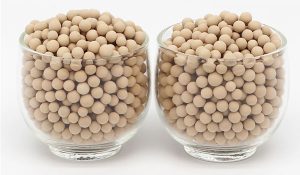Types of Medical Oxygen Gas Generators
Medical Oxygen Gas Generators are in fact simply divided into two types according to their use: medical oxygen concentrators and home health care oxygen concentrators; for us the use is auxiliary treatment and daily health care.
The differences between the two are:
In terms of oxygen concentration, medical oxygen concentrators require a stable oxygen concentration of ≥ 90% and an alarm must be issued when it falls below 80%. The oxygen concentrations required for home health care are not high, as long as they are 21% above the oxygen concentration in the air, some of them are 30%-90%.
In terms of equipment classification, medical oxygen concentrators are medical devices that are tested, approved, and licensed as medical devices by the State Drug Administration. The home healthcare category is a non-medical device and does not require a national medical device license or approval.
From the point of view of the applicable crowd, medical oxygen machines are generally relatively large mainly for patients and hospitals within the emergency, operating theatre, treatment, etc. For home healthcare machines, the elderly, pregnant women, and other people who need oxygen for healthcare can use them.
Molecular Sieve Usage in
Medical Oxygen Production Machine
Medical molecular sieve oxygen generators, commonly known as variable pressure adsorption oxygen generators, use variable pressure adsorption technology to produce oxygen and extract oxygen from the air. The molecular sieve is filled with molecular sieves with a surface area of 800-1000m2/g per gram. Under pressure, the nitrogen in the air is adsorbed using the physical adsorption and desorption techniques of the molecular sieve, and the oxygen that is not adsorbed is collected and purified to give a higher purity of oxygen. Under depressurization of the molecular sieve, the previously adsorbed nitrogen is re-emitted into the air. When pressurized again, nitrogen can be adsorbed again for oxygen production, so the medical molecular sieve oxygen generator can achieve a cyclical cycle of oxygen production, a dynamic process.

Medical Oxygen Generator Cost/Price
Oxygen supply in cylinders: The purchase price of oxygen varies slightly from region to region, with an average of RMB20~38/bottle, and the unit cost of oxygen is about RMB5.5/Nm3. Oxygen supply in cylinders requires high labor costs in handling, operation, management, etc. In general, the unit cost is expensive and laborious and time-consuming, which is an inhumane way of supplying oxygen and has been eliminated by most developed countries.
Liquid oxygen supply: the purchase of liquid oxygen is about 2000~2500 RMB/ton, and the unit cost of oxygen is about 3.5 RMB/Nm3. liquid oxygen tank filling and daily management require dedicated personnel, and its liquid level measurement error when filling is large, which is easy to directly causes economic loss. At the same time, liquid oxygen supply equipment covers a large area. Liquid oxygen is a low-temperature, strong combustion material, in addition, to prevent liquid oxygen storage tank leakage and low-temperature burns, but also to be alert to the risk of its explosion.
PSA oxygen generator: After normal operation, the equipment only consumes electricity to maintain the operation of the equipment, the unit oxygen cost is low, usually about 1.2 yuan / Nm3. PSA oxygen generator uses inexhaustible air as raw material, a zeolite molecular sieve as adsorbent, using the principle of variable pressure adsorption, and the use of zeolite molecular sieve on the selective adsorption of oxygen and nitrogen to make nitrogen and oxygen separation. It has the characteristics of simple process flow, intelligent control by microcomputer PLC, fast gas production, low energy consumption, online detection of oxygen purity, easy operation and maintenance, low operating cost, and strong adaptability of the device, which can truly achieve unmanned operation of production. PSA oxygen equipment is a permanent gas investment, cost recovery is absolutely achievable.



